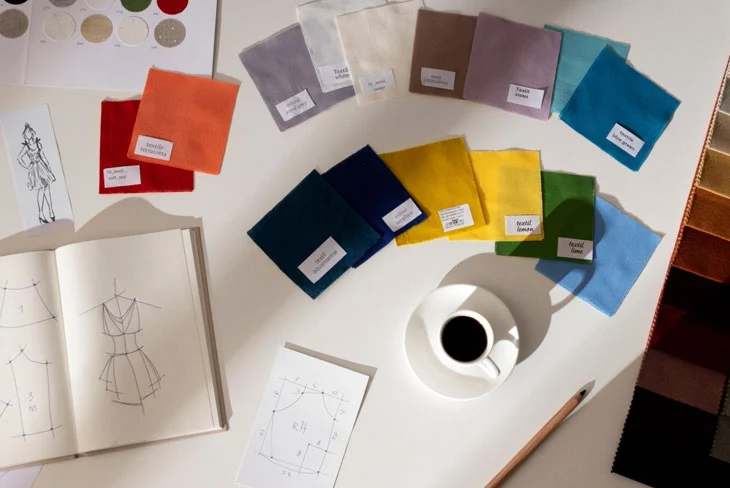Colors can make or break a room, turning a dull space into a masterpiece or a beautiful area into an eyesore.
Have you ever walked into a room and felt instantly calm, energized, or even slightly uncomfortable without knowing why? The secret might be hiding in plain sight – on the walls, furniture, and decor surrounding you. It’s all about color, folks!
The Psychology of Color in Interior Design
Colors aren’t just pretty to look at; they’re powerful mood-setters. They can influence our emotions, behavior, and even our physical well-being. It’s wild, right?
Take blue, for instance. It’s often associated with calmness and serenity. Slap some blue paint on your bedroom walls, and you might find yourself drifting off to dreamland more easily. On the flip side, red is known to increase heart rate and stimulate appetite. No wonder so many fast-food joints use red in their branding!
But it’s not just about picking a color and calling it a day. The intensity, shade, and how colors are combined play important roles too. A bright, sunny yellow might perk you up, while a muted, mustard tone could create a cozy, vintage vibe.
Choosing the Right Colors for Different Rooms
Now, let’s take a room-by-room tour and see how color choices can make a difference:
- Living Room: This is often the heart of the home, where family and friends gather. Warm, inviting colors like soft browns, creamy whites, or muted greens can create a welcoming atmosphere. But don’t be afraid to add a pop of color with accessories!
- Kitchen: White is a classic choice for kitchens, making the space feel clean and bright. But why not spice things up? A deep blue or forest green can add depth and sophistication. Just remember, if you go bold on the cabinets, keep the walls neutral to balance things out.
- Bedroom: This is your sanctuary, so choose colors that help you relax. Soft blues, lavenders, and greens are popular choices. But if you’re more of a “rise and shine” person, warmer tones like peach or pale yellow might be your cup of tea.
- Bathroom: Light colors can make a small bathroom feel more spacious. Think soft grays, pale blues, or crisp whites. Want to add some pizzazz? Try a bold wallpaper or colorful tiles as an accent.
- Home Office: Colors that boost productivity and focus are key here. Green is said to enhance creative thinking, while blue can increase concentration. Just steer clear of overly bright or distracting hues that might pull your attention away from work.
The Art of Color Combinations
Picking one color is tough enough, but combining colors? That’s where things get interesting! Here are some tried-and-true color schemes to consider:
- Monochromatic: This scheme uses different shades and tints of the same color. It’s simple, elegant, and hard to mess up. Perfect for beginners!
- Complementary: These are colors opposite each other on the color wheel, like blue and orange or purple and yellow. They create a high-contrast, vibrant look.
- Analogous: These are colors that sit next to each other on the color wheel, like blue, blue-green, and green. They create a harmonious, soothing effect.
- Triadic: This scheme uses three colors equally spaced on the color wheel. It’s bold and balanced, perfect for those who love color but don’t want to go overboard.
Remember, the key is balance. If you’re using a bold color, pair it with neutrals to avoid overwhelming the space.
Color and Light: A Dynamic Duo
Here’s something that often gets overlooked: the relationship between color and light. The same color can look drastically different depending on the lighting in a room.
Natural light is a game-changer. North-facing rooms tend to get cooler, bluish light, while south-facing rooms bask in warm, golden rays. This can affect how colors appear on your walls.
Artificial lighting plays a role too. Warm white bulbs can make reds and yellows pop, while cool white lights enhance blues and greens. It’s like having a filter on your room!
Pro tip: Always test your paint colors in the room where they’ll be used, at different times of day. What looks perfect in the store might be a whole different story in your living room at sunset.
The Impact of Color on Room Size and Perception
Colors aren’t just about looks and feels; they can change how we perceive space. It’s like magic, but it’s all based on how our eyes and brains work together.
Light colors, like whites, creams, and pale grays, can make a room feel larger and more open. They reflect more light, creating an airy, spacious vibe. This is why they’re often recommended for small rooms or spaces with limited natural light.
On the flip side, dark colors tend to make a room feel smaller and more intimate. But don’t write them off just yet! A deep, rich color can add depth and drama to a space. It’s all about how you use it.
Pro tip: painting the ceiling a lighter color than the walls can make it appear higher. It’s like creating your sky indoors!
Color Trends in Interior Design
Color trends in interior design are like fashion – they’re always changing. But unlike that neon windbreaker from the 80s, a well-chosen color scheme can stand the test of time.
In recent years, we’ve seen a shift towards more natural, earthy tones. Think sage greens, warm terracottas, and soft, sandy beiges. These colors bring a sense of calm and connection to nature – something many of us crave in our increasingly digital world.
But that doesn’t mean bold colors are out of style. Jewel tones like sapphire blue, emerald green, and amethyst purple are making a comeback, adding richness and luxury to interiors.
Here’s a quick look at some color trends over the past few years:
| Year | Popular Colors | Design Trend |
|---|---|---|
| 2020 | Navy Blue, Blush Pink | Classic Blue (Pantone Color of the Year) |
| 2021 | Ultimate Gray, Illuminating Yellow | Calming neutrals with pops of cheerful color |
| 2022 | Very Peri (blue-purple), Sage Green | Nature-inspired hues |
| 2023 | Viva Magenta, Digital Lavender | Bold, optimistic colors |
Remember, trends come and go. The best color choices are ones that make you happy and comfortable in your space.
The Role of Culture in Color Preferences
Colors mean different things in different cultures, and this can have a big impact on interior design choices around the world.
In Western cultures, white often symbolizes purity and cleanliness. That’s why it’s so popular in kitchens and bathrooms. But in some Eastern cultures, white is associated with mourning and death.
Red is another color with varied cultural meanings. In China, it’s considered lucky and is often used in celebratory decorations. In Western design, it’s often used as an accent color to add energy and excitement.
Here’s a quick rundown of some cultural color associations:
- Blue: Often associated with trust and stability in Western cultures. In Middle Eastern cultures, it’s believed to ward off the evil eye.
- Green: Symbolizes nature and growth in many cultures. In Islamic cultures, it’s considered a holy color.
- Purple: Often associated with royalty and luxury in Western cultures. In Thailand, it’s a color of mourning.
Understanding these cultural differences can be especially important when designing spaces for diverse audiences or when drawing inspiration from different cultural aesthetics.
The Bottom Line: Choosing Colors That Work for You
At the end of the day, the most important thing is to choose colors that make you feel good in your space. Sure, it’s great to know the rules and trends but don’t be afraid to break them if that’s what feels right to you.
Your home is your sanctuary, and the colors you choose should reflect your personality and lifestyle. Love bold, bright colors? Go for it! Prefer a calm, neutral palette? That’s great too!
Here are some final tips to help you make color choices you’ll love:
- Start with a color you love: Whether it’s the blue of your favorite sweater or the green of your garden, use colors you’re naturally drawn to as a starting point.
- Consider the mood you want to create: Think about how you want to feel in each room and choose colors that support that feeling.
- Take your time: Live with color samples for a while before making a final decision. See how they look in different lights and at different times of day.
- Don’t forget about existing elements: Consider the colors of your furniture, flooring, and architectural features when choosing wall colors.
- Trust your instincts: If a color feels right to you, it probably is. Don’t let rules or trends override your taste.
Color is a powerful tool in interior design, capable of transforming spaces and influencing moods. By understanding the basics of color psychology, considering the function of each room, and staying true to your style, you can create a home that’s not just beautiful, but also a true reflection of you. So go ahead, pick up that paintbrush, and let your true colors shine!






No Comment! Be the first one.